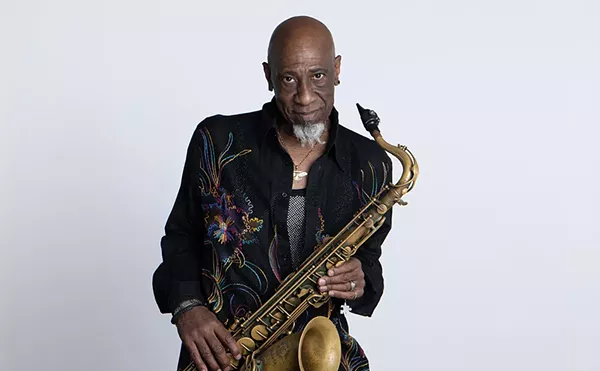
Audio By Carbonatix
[
{
"name": "GPT - Leaderboard - Inline - Content",
"component": "35519556",
"insertPoint": "5th",
"startingPoint": "3",
"requiredCountToDisplay": "3",
"maxInsertions": 100,
"adList": [
{
"adPreset": "LeaderboardInline"
}
]
}
]
The Bat Whispers (1930), writer-director Roland West’s adaptation of a novel (and later play) by Mary Roberts Rinehart, is a classic example of the "old dark house" film, a genre which seems to have come to a bad end with the recent remake of The Haunting (though The Blair Witch Project cleverly mutated it into the "old dark forest"). The premise requires that a group of people be gathered together in a large house, preferably during a storm, and then suitably menaced by things or people unseen until the (hopefully surprising) climax.
Despite its lack of thunder and lightening, The Bat Whispers satisfies in all other areas: The house is conveniently furnished with hidden passageways and the all-important secret room; the menace, a superthief called the Bat, may or may not be a supernatural entity; and the put-upon gathering has enough red herrings to guarantee an unexpected denouement.
The plot may be more complicated than necessary, and the broad-stroke comic relief may set modern teeth on edge, but this is offset by the stalwart verve of Chester Morris as Detective Anderson and the seductive pleasure of imported expressionism which is draped over the project.
Director West has become a rather obscure figure – he only directed nine films and most of them are lost – but here, remaking his 1926 silent film simply called The Bat, he displays an innovative use of traveling shots, swooping up buildings and into windows, and a painterly eye for unsettling shadows. The film was shot in an early (and soon abandoned) wide-screen process, though this goes largely unexploited. But West had style to spare and he gives his unpretentious confection a deliciously dark and fluid gloss.
Richard C. Walls writes about the arts for the Metro Times. E-mail him at letters@metrotimes.com.





